A former RAF base in southeast London that’s now a museum warehouse is starting to open up regularly for behind the scenes tours.
The base was RAF Kidbrooke, a vast site that was mainly a logistics and supply site for the RAF, but was also a training school in the early days of the Cold War for Russian language specialists. It closed in 1965, and much of the site was turned into housing, but one section was taken over by the Royal Maritime Museum in Greenwich, and they use the old RAF buildings as a warehouse for the objects that can’t be displayed in Greenwich.
Despite storing the Museum’s collection since the early 1970s, members of the public rarely have had the chance to see behind the scenes.
Now though, they offer tours of the warehouse.
To get to the site is to wander around residential streets looking for the gated entrance, where a security guard will direct you to reception, in a modern office at the end of the rows of single-story WW2 buildings. The modern office, known as the Prince Philip Maritime Collections Centre is also home to the museum’s conservation team and some of their cold-store climate control spaces with huge rooms for paintings and documents.
The amount you get to see depends on whether you go on the weekly one-hour tour or the monthly two-hour tour, but both are wonderfully atmospheric once you get inside the old RAF buildings.
Walking into initially a dark spooky corridor until the automatic lights come on, the first thing that hits you is the heat and humidity, as these buildings are used to store things that prefer warm and humid spaces. As I learned, that can mean compromises in the conservation of objects made from mixed materials, such as a pair of exceptionally heavy diving boots made from a mix of metal and leather. The steel prefers a dry environment, but the leather would suffer, so curators have to make difficult choices at times.
Huge rows of objects stacked neatly on racks and shelves disappearing into the shadows of the far end of the old buildings and curious objects brought out to guess their use. An old electro-mechanical device turned out to be an early arc lamp for use in lighthouses, camp bearded ships mascots guard another room, barrels long lacking rum in a corner, and then the lights are switched off and the archive slumbers once more.
The modern building is no less impressive to walk around, and while clinically modern, it’s where the huge paintings archive is housed. Row upon row of paintings on wire racks that can be pulled out, a surprisingly long way for something seemingly unsupported at the bottom. Learn the origins of the gilt picture frames, as it turns out they serve a practical function and aren’t just gaudy decorations.
Rows upon rows of old books in a cold dry storeroom sitting next to shelves of china. Some are memories and collectables with Nelson’s name all over them, others were owned by Nelson. Just as the archive is housed in seemingly anonymous-looking buildings, a large black box turns out to be an early GPS receiver – the sort of thing that now fits into a tiny corner of a silicon chip inside your phone.
This isn’t a tour to learn a lot about specific maritime objects, but a buffet selection of the most interesting and curious objects that will be interesting for the casual visitor to see and remember on their way home. This means it’s accessible to anyone who fancies wandering down a quiet residential street to find an old military base filled with nautical heritage.
Book a tour
There are two types of tour that take place:
First Thursday of the month at 1:30pm – Two hour tour £16
Saturdays at 1:30pm – One hour tour £12
Getting to the Prince Philip Maritime Collections Centre
If coming by public transport, then the museum warehouse is a short walk from Kidbrooke train station, and then follow the footpath over the railway and under the A2 from the south side of the station to get onto Nelson Mandela Road.
If you want to avoid the footpath, then it’s probably better to get off at Eltham station and catch a bus on Route 132 that stops at Broad Walk, and it’s a couple of minutes walk to the archive on Nelson Mandela Road from there.

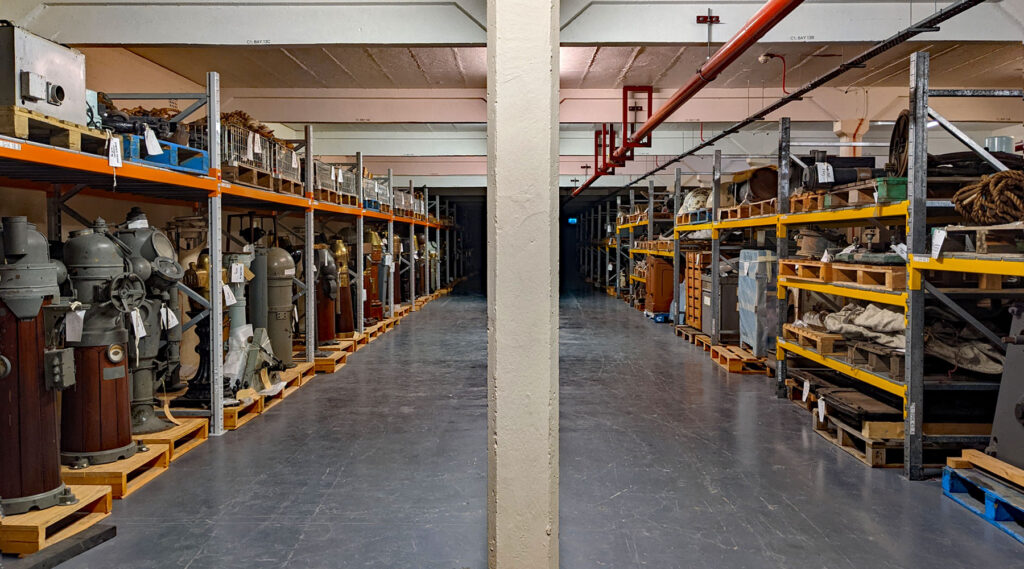
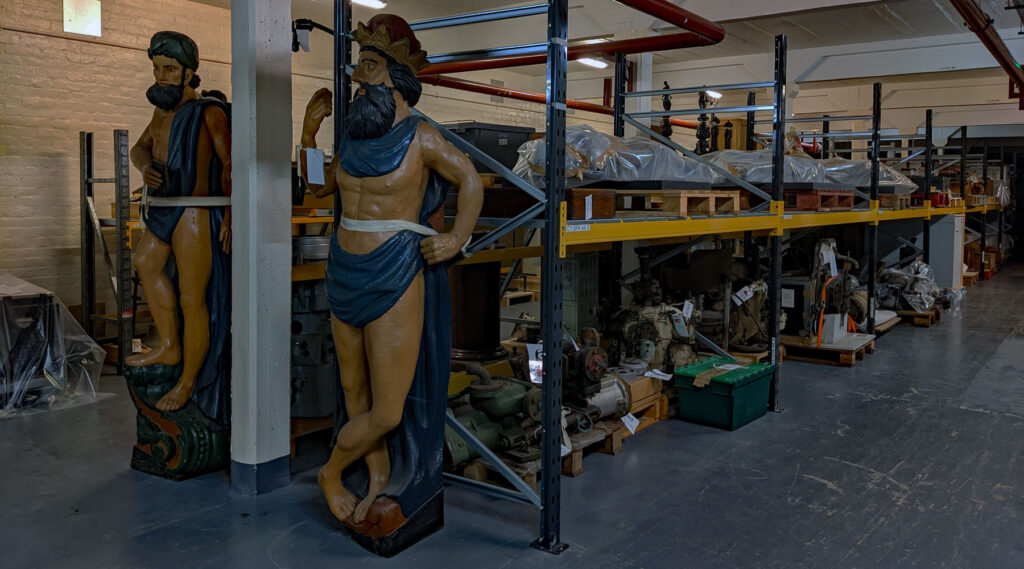
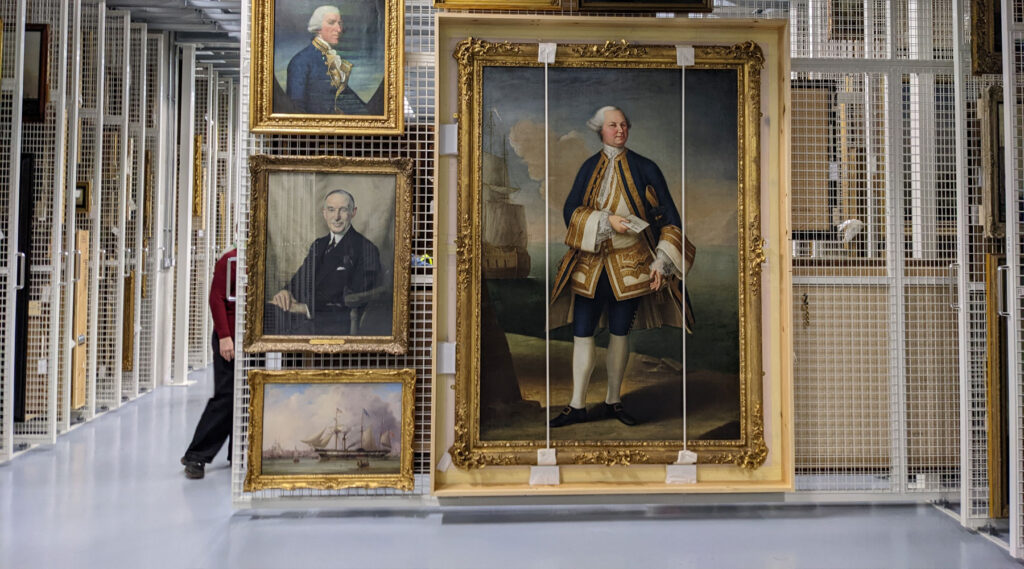
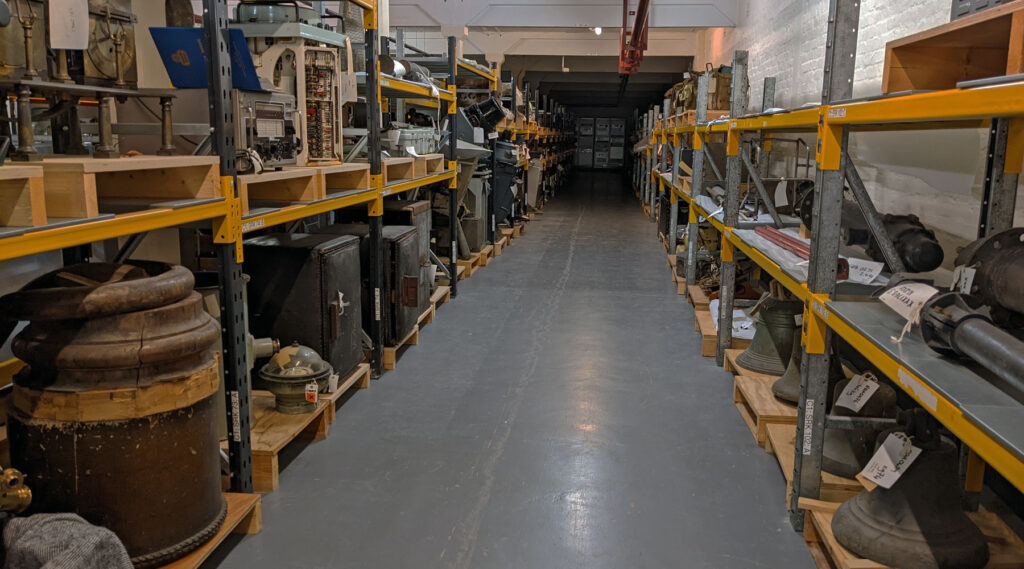
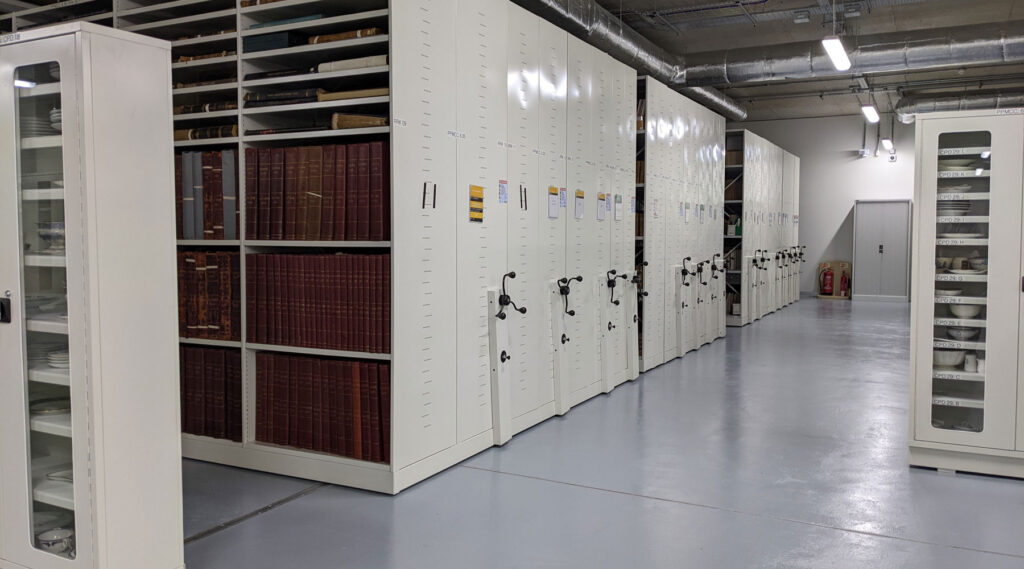
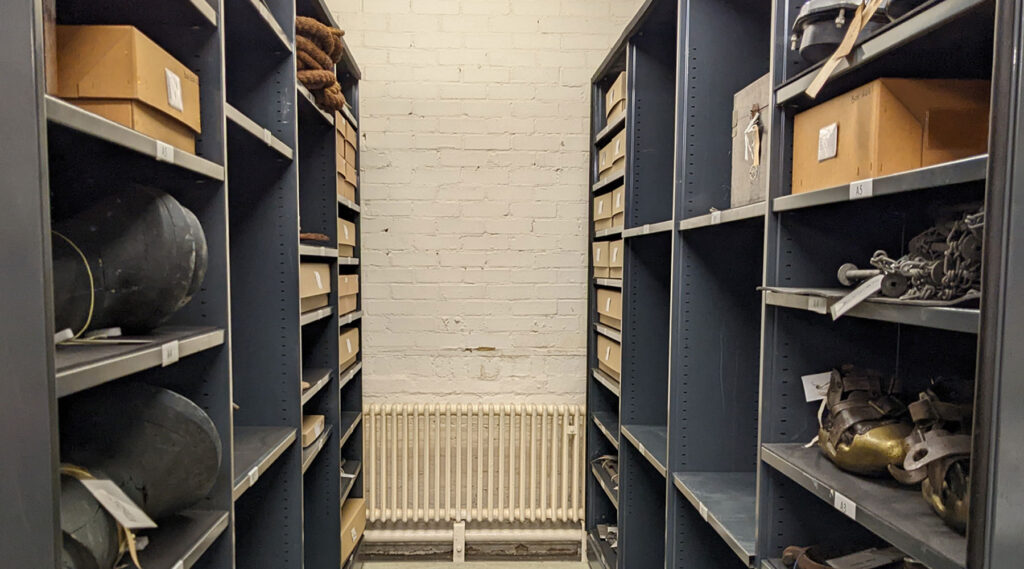






Sounds interesting, but what temperature and humidity is it, if they said it?
The best way to find out is to contact the curators.